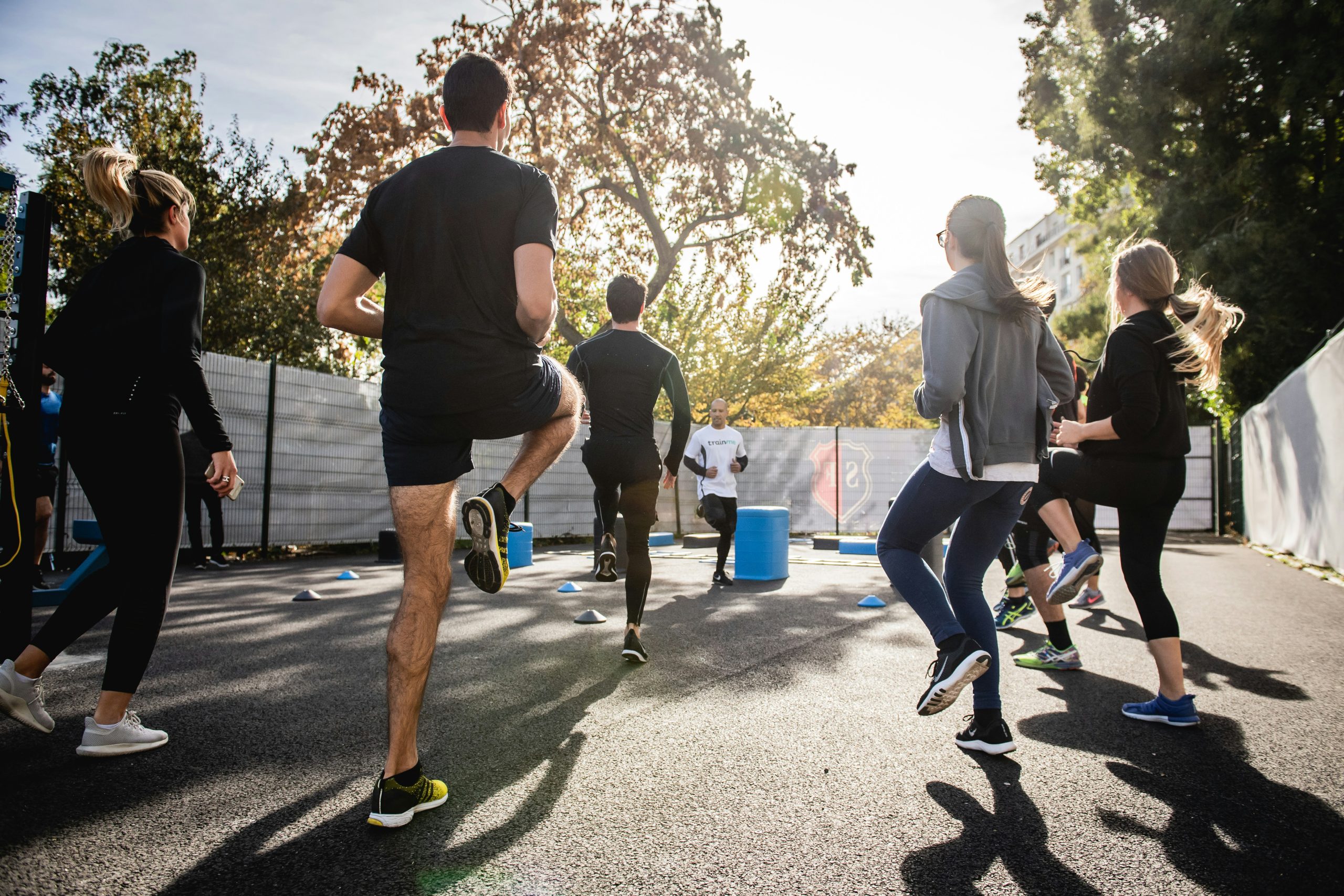Table of Contents
![]()
Exercise is essential for maintaining physical health and mental well-being. However, the risk of injury is a significant concern for many individuals engaged in physical activities. Whether you’re a seasoned athlete or a casual exerciser, understanding how to prevent exercise injuries is crucial to ensuring a safe and effective workout regimen. This article provides a detailed guide on preventing exercise-related injuries by covering key aspects such as warm-up routines, proper technique, gradual progression, and more.
1. Introduction
Injury prevention is a critical component of any exercise program. Common injuries, such as sprains, strains, and fractures, can occur due to improper techniques, overuse, or inadequate preparation. By adopting preventive measures, you can significantly reduce the likelihood of these injuries and enjoy a more sustainable and effective exercise routine.
2. Warm-Up and Stretching
Benefits of Warming Up
Warming up prepares your body for the physical demands of exercise. It increases your heart rate, improves blood flow to muscles, and enhances joint flexibility, which can help prevent injuries. A proper warm-up can also mentally prepare you for your workout, enhancing overall performance.
Dynamic Stretching vs. Static Stretching
Dynamic stretching involves moving parts of your body through a full range of motion and is ideal for warming up. Examples include leg swings, arm circles, and torso twists. Dynamic stretches help increase your heart rate and flexibility, preparing your muscles and joints for the activity ahead.
In contrast, static stretching, which involves holding a stretch for 15-30 seconds, is best suited for cooling down after exercise. It helps improve flexibility and reduce muscle tension but should be avoided during warm-up as it may temporarily reduce muscle strength.
Recommended Warm-Up Routines
A typical warm-up routine might include 5-10 minutes of light aerobic activity, such as jogging or cycling, followed by dynamic stretches. For example, a warm-up could involve a few minutes of brisk walking, followed by dynamic lunges and high knees.
3. Proper Technique
Importance of Correct Form
Using proper technique is crucial in preventing exercise injuries. Incorrect form can place undue stress on your muscles, joints, and ligaments, increasing the risk of strains and other injuries. Ensuring that you perform each exercise with correct technique helps distribute the load evenly and minimizes the risk of injury.
How to Learn Proper Technique
To learn proper technique, consider working with a certified fitness trainer or coach who can provide personalized guidance. Many exercises also benefit from video tutorials and instructional materials that demonstrate correct form. Practicing in front of a mirror can help you self-correct and ensure proper alignment.
Common Form Mistakes and Corrections
Common mistakes include improper alignment during squats, excessive arching of the back during deadlifts, and incorrect foot positioning during running. For example, during squats, ensure your knees track over your toes and your back remains straight. During deadlifts, keep your core engaged and avoid rounding your back.
4. Gradual Progression
Importance of Gradual Increase in Intensity
Gradual progression helps your body adapt to increased demands without overloading it. Rapid increases in intensity, volume, or duration of exercise can lead to overuse injuries and fatigue. By gradually increasing the intensity and duration of your workouts, you allow your body to build strength and endurance safely.
How to Create a Balanced Workout Plan
A balanced workout plan includes a mix of aerobic, strength, and flexibility exercises. Incorporate variety to target different muscle groups and avoid overworking any single area. For instance, alternating between cardiovascular exercises, weight training, and stretching can help ensure a well-rounded fitness routine.
Signs of Overtraining and How to Avoid It
Overtraining can lead to injuries, fatigue, and diminished performance. Signs include persistent soreness, fatigue, irritability, and decreased performance. To avoid overtraining, ensure adequate rest between workouts, listen to your body’s signals, and incorporate rest days into your routine.
5. Strengthening and Conditioning
Role of Strength Training in Injury Prevention
Strength training enhances muscle strength, stability, and joint support, all of which are crucial for injury prevention. Strong muscles and ligaments help absorb impact and protect your joints during physical activity.
Key Exercises to Strengthen Muscles and Joints
Incorporate exercises that target key muscle groups and improve joint stability. For example, squats and lunges strengthen the lower body, while planks and deadlifts build core stability. Balance exercises, such as single-leg stands, can also improve joint stability and coordination.
Importance of Cross-Training
Cross-training involves engaging in different types of exercises to prevent overuse injuries and promote overall fitness. For instance, if you primarily run, consider incorporating swimming or cycling into your routine to reduce repetitive stress on your joints.
6. Rest and Recovery
Importance of Rest Days
Rest days are essential for muscle recovery and overall well-being. They allow your body to repair and strengthen itself, reducing the risk of overuse injuries. Ensure that you include at least one or two rest days in your weekly exercise routine.
Techniques for Effective Recovery
Effective recovery techniques include stretching, foam rolling, and adequate sleep. Gentle stretching can help alleviate muscle tightness, while foam rolling can improve blood flow and reduce muscle soreness. Prioritize quality sleep to support overall recovery and performance.
How to Listen to Your Body
Pay attention to signs of fatigue, soreness, or discomfort. If you experience persistent pain or discomfort, it’s important to rest and seek professional advice if necessary. Learning to listen to your body helps prevent injuries and ensures long-term exercise success.
7. Proper Equipment
Choosing the Right Gear for Your Activity
Wearing appropriate gear is crucial for injury prevention. For instance, use a supportive sports bra for women, and ensure that your clothing and equipment are suited to the type of exercise you are performing.
Importance of Proper Footwear
Proper footwear is essential for preventing injuries, particularly for activities involving high-impact or repetitive movements. Choose shoes that provide adequate support, cushioning, and stability based on your activity and foot type.
Equipment Maintenance and Replacement
Regularly check and maintain your equipment to ensure it remains in good condition. Replace worn-out gear, such as running shoes or exercise mats, to avoid potential injuries.
8. Nutrition and Hydration
Impact of Nutrition on Injury Prevention
Proper nutrition supports muscle function, repair, and overall health. Ensure a balanced diet rich in protein, healthy fats, and carbohydrates to fuel your workouts and aid recovery. Nutrients such as calcium, vitamin D, and magnesium are also important for bone and muscle health.
Importance of Staying Hydrated
Adequate hydration is crucial for optimal performance and injury prevention. Drink water before, during, and after exercise to maintain fluid balance and support muscle function. Dehydration can lead to muscle cramps and decreased performance.
Recommended Dietary Practices for Active Individuals
Consume a balanced diet that includes a variety of fruits, vegetables, lean proteins, whole grains, and healthy fats. Consider consulting a nutritionist for personalized advice based on your specific needs and exercise goals.
9. Education and Awareness
Understanding Personal Limits
Recognize your physical limits and avoid pushing yourself beyond them. Understanding your body’s capabilities and limitations helps prevent injuries and ensures a safe exercise experience.
Learning About Common Injuries in Your Sport
Familiarize yourself with common injuries related to your specific sport or activity. Understanding the risks and preventive measures can help you make informed decisions and adjust your exercise routine accordingly.
Importance of Consulting Professionals
Consulting fitness trainers, physiotherapists, or other professionals can provide valuable insights into injury prevention and proper technique. Their expertise can help you address specific concerns and optimize your exercise regimen.
10. Conclusion
Preventing exercise injuries is a multifaceted approach that involves proper preparation, technique, and recovery. By incorporating warm-up routines, using correct form, gradually increasing intensity, and paying attention to your body’s signals, you can reduce the risk of injuries and enhance your overall fitness experience. Remember that injury prevention is an ongoing process that requires awareness and adjustment. Prioritizing these practices will help you maintain a safe and effective exercise routine, allowing you to enjoy the numerous benefits of physical activity while minimizing the risk of injury.
Share This





Be the first to comment